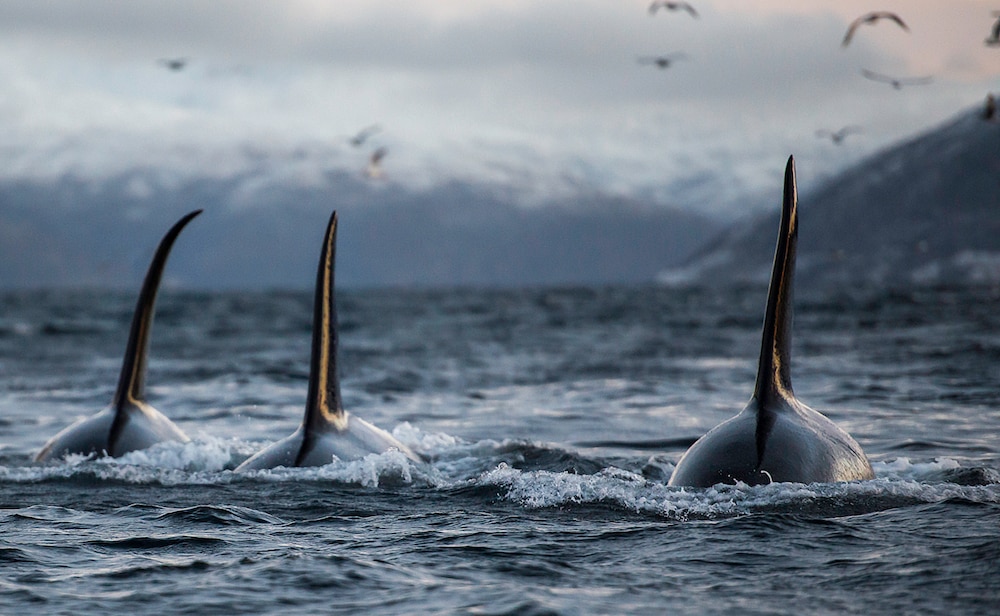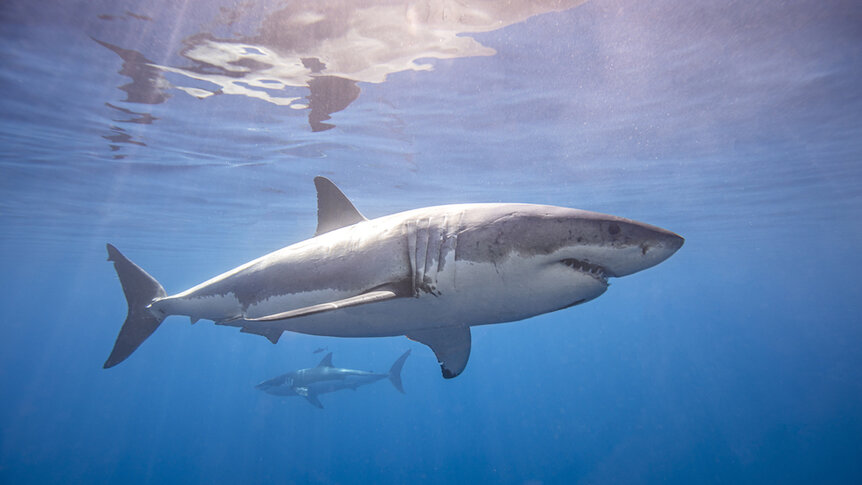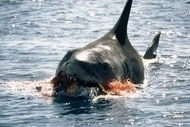Create a free profile to get unlimited access to exclusive videos, sweepstakes, and more!
Remember That Half-Eaten Great White Shark? DNA Evidence Identifies the Killer (Whale)
Even in the ocean, there's no such thing as a perfect crime.

In mid-October, beachgoers near Portland, Australia found a fishy corpse washed up on the shore. The body was that of a Great White shark, estimated to have been roughly 5 meters from tooth to tail when it was alive. By the time it reached the beach, however, all that remained was the head and spine, everything below the dorsal fin and behind the gills was gone.
RELATED: Half-Eaten Great White Shark Washes Ashore in Australia - But What Chomped it in Half?
At the time, people speculated that the injuries may have been the result of an attack from killer whales. Witnesses noted the presence of an orca pod in the area a few days earlier as potential evidence. Moreover, the attack was consistent with orca-on-shark crime common in the waters near South Africa. However, no orca had ever been documented attacking a white shark near Australia. To help solve the crime, we called upon the talents of one Charlie Cale (Natasha Lyonne), star of Rian Johnson’s mystery of the week, Poker Face (streaming now on Peacock), but apparently she was busy. Now, the aquatic mystery has been solved and the case closed thanks to the investigatory work of local scientists.
Scientists Solve Shark Murder with Fishy Forensics
In recent years, South African orcas have hunted down and disemboweled white sharks with increasing ferocity. Scientists have been studying the impact of losing white sharks, a top ocean predator, on the rest of the downstream food web. If orcas near Australia have picked up that shark hunting behavior, it’s something marine scientists would want to know. To that end, Deakin University Associate Professor Adam Miller and colleagues worked to study the shark’s body and determine the cause of death.
Miller and team worked with first nations groups and state government authorities to gather the shark carcass and get it to a lab. “Inspection of the shark showed really characteristic bite marks in the pectoral girdle, right between those fins under the belly, that are quite typical of killer whales,” Miller told ABC Radio Melbourne. “They effectively suck out the liver, they’re really picky eaters it seems.”
In addition to those characteristic bite marks, scientists also took DNA samples from around the bite wound. They picked up shark DNA, of course, but they also picked up a boatload of orca DNA which Miller described as a smoking gun.
RELATED: Steven Spielberg 'truly' regrets demonization of sharks and harmful sport fishing caused by 'Jaws'
“They are incredibly intelligent animals. In Australia we think there are two pods. Pods do really quite distinctive things, they have distinctive feeding and predation behaviors, and they can learn, as well. The communication is pretty amazing, they can communicate between pods where behaviors are picked up,” Miller said.
Those behaviors aren’t totally limited to attacking white sharks either. Elsewhere, in the Strait of Gibraltar, orcas are busily sinking yachts. All of which suggests that once killer whales find a pastime they enjoy, there’s little we can do to stop them until the trend plays itself out.
That’s one murder mystery solved, but there are plenty more where that one came from on Poker Face, streaming now on Peacock.



























